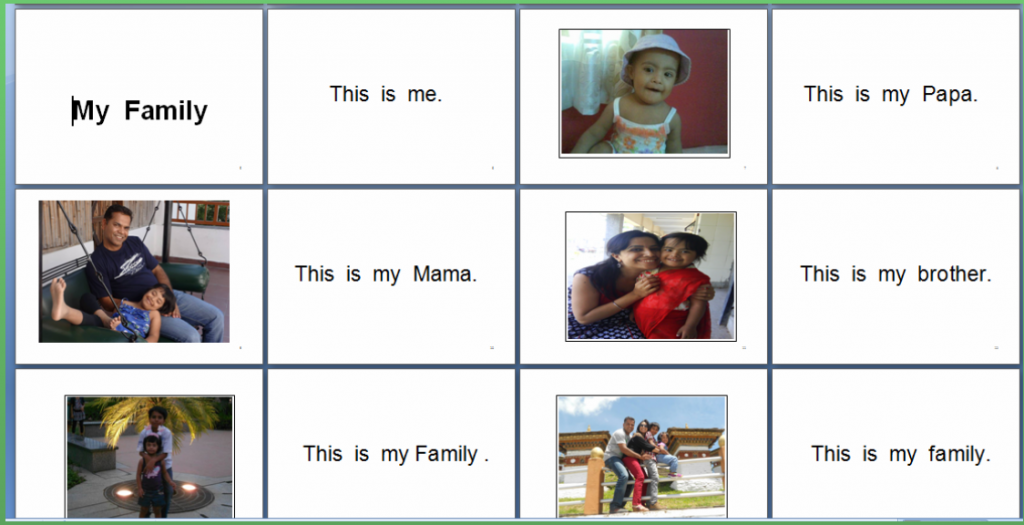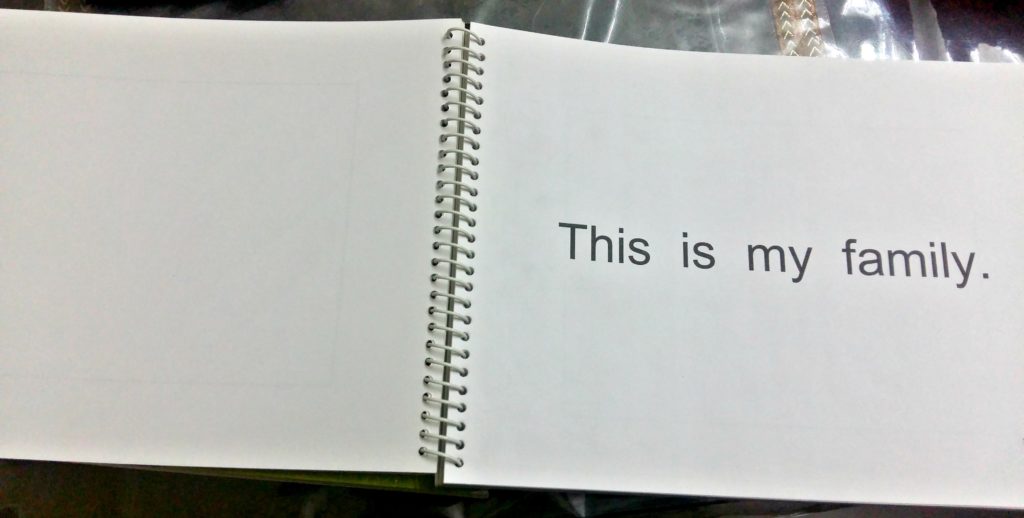Let me start with a quote that I have straight away lifted from Natalie Hale of special reads. I love this quote, and this pretty much sums up why do we need to create more and more of personal books for our children with special needs.
“There is nothing, repeat, nothing more motivating and guaranteed to inspire success than a personal book in the hands of an emergent reader. No matter what the age.”
What are personal books?
Personal books are simple, homemade books that are based on child’s current top interest, and are created to help motivate the child on the path of reading.
The schools all over the world are going crazy with phonics. The phonetics do work for majority of the children, however there is a significant number of students, both neuro-typical as well as with special needs, who find it difficult to keep pace with decoding. It could be because of several reasons including difficulty in understanding, blending, speech issues, concentration issues, not-so-interesting material, hearing challenges etc. Once children start getting discouraged or face ‘fear of failure,’ they give up and very often start thinking that they can’t do it. Personal books can bring such children back into the reading game and can help them gain much needed confidence.
Personal books are a different path to the same destination- Reading! A lot of educators and parents create personal books, yet they often make mistakes which can lead to bigger problems leading to a not so interested child. We have brought to you 9 simple tips or guidelines to create the personal books which would help you and your child on the path to successful reading.
1. No Visual Clutter
The thumb rule of any personal book is to make it clutter free. There should be no visual distractions. The font colour may be red if it’s very first or second book but apart from that there shouldn’t be any stickers, smileys or other creativity show offs. The books are supposed to hold the attention of the child on the written word than anything else.
( In this picture of a personal book, The back side of all the text and picture pages are empty)

2. Write on Right
The book should be made on ‘landscape format’ and text should be typed only on the right hand side page. The left side of the pages should all be empty. Remember no distraction rule. Write short sentences. In the beginning 3-4 word sentences are enough.
3. The Font size
The font size should be large enough to be easy on brain and the eyes. The recommended font size initially is 72″ and you can gradually bring it down to 30 or 25 in next 2-4 years.
Also Read: 5 Must Read Books For Parents Before Teaching Reading To Special Needs
4. The Font type
Years of research in font type suggests that the best font type for all children books is from ‘Sans-serif font type’ There are many fonts in this type. You can choose whatever suits you. We recommend Arial, Tahoma and Verdana.

5. Repeat, repeat, repeat
This is how you, I and many people of our generation have learned to read. If you are from the age that I am; you’d remember that we were not taught with phonics. We happened to learn reading by sight and by repetition. Similarly, we can make it easy for our children to learn to read if we repeat it enough number of times. If they reach to a word which they already know, they become happy and this happiness helps them to stay interested. Scientifically too, we need to repeat enough times so that this word can get stored in the long term memory. Once there, it will be easy to pull it out when needed.

6. Double Spacing
Out larger objective by making personal books is to make it easy on the brain. And here another important thing is to give double spacing after every word. Many of our children, with or without visual challenges, sometimes struggle in figuring out where does the first word ends and the next word starts. This can demotivate them and we want to discourage any such thing from happening. So to make every word easier, never forget to add an extra space.
7. High interest words
The personal books are an extension of child’s personal likes, dislikes, favourite things, recent visits, friends, family or anything that he is interested in. High interest words are the same words which the child is interested in at that point of time. For a two year old, the high interest words could be Papa, Mama, Ball and for a six year old it could be football,bag, swing, school or friend.
8. High Interest words plus High frequency words
The key to a good personal book is to mix the high interest and high frequency words in just the right amount. The ideal ratio is 8:2, where 8 are the number of high interest words and 2 are the high frequency words from ‘Dolch’ or ‘fry’ list. One can change this ratio based on the level and interest of the child.

9. Sandwich style
This is a great method recommended by Natalie, and I strongly vouch for it. Make flash cards of all the words used in the personal book. Fast flash the cards in a group of 5 (one per second by sitting across to the child), read the book and flash the cards one more time to complete the cycle! It shouldn’t take you more than 10-15 minutes to do the whole exercise. Do it three times a day ( try) and get ready to see some astonishing results!
Personal books are extremely helpful for teaching reading. They can also be effectively used for teaching and reinforcing socially appropriate behaviour or any recent development in the family. Since the whole premise of the book is dependent on what a child likes and does. It helps in building the comprehension levels as well. Children understand that written words have a meaning and they are not just decoding tools.
Here is a quick recap
Thanks for reading. Do leave a comment if you liked the post. Your comments helps us write better.






